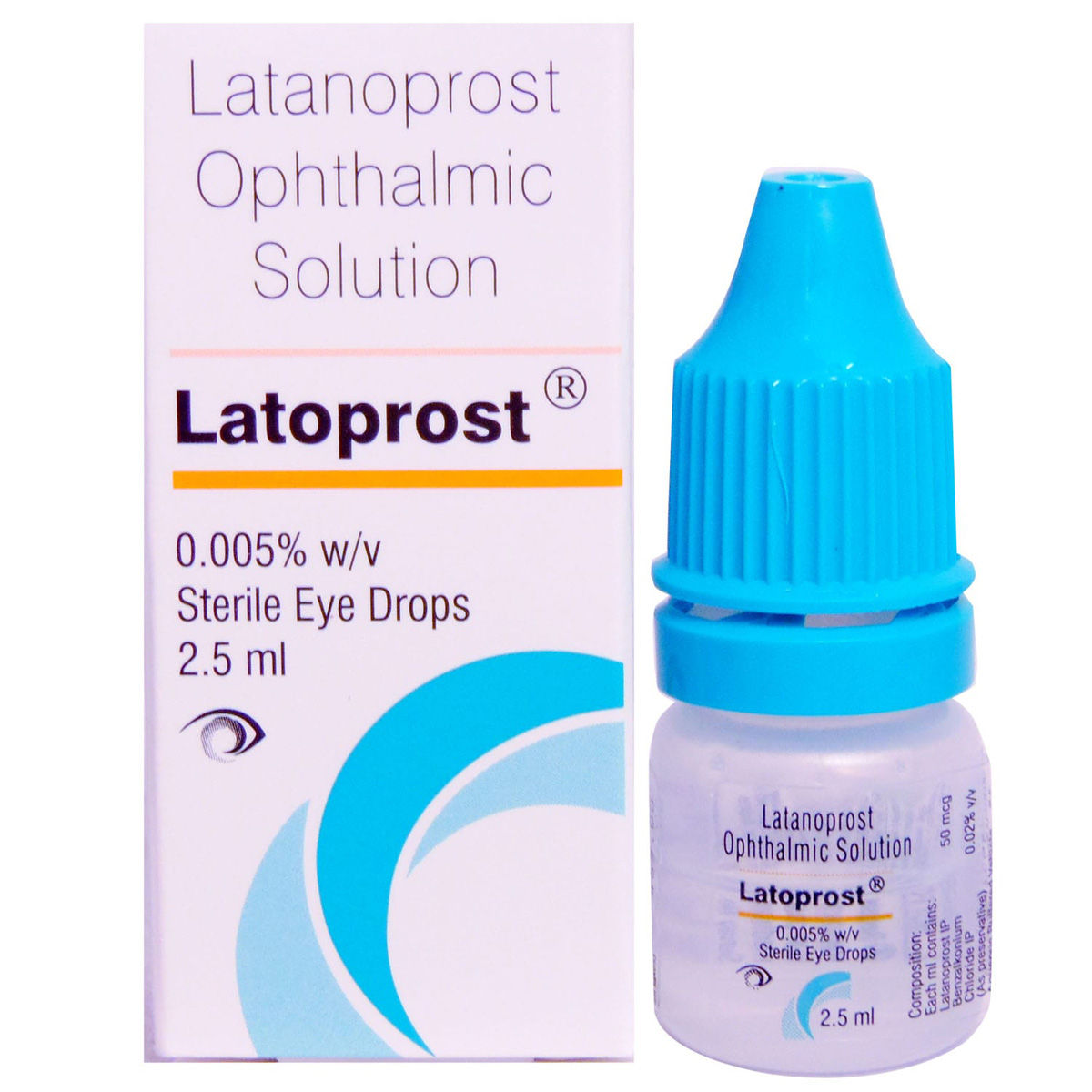Latanoprost 0.005 eye drops are a type of medication commonly used in the treatment of glaucoma and ocular hypertension. Glaucoma is a condition where the pressure inside the eye becomes too high, potentially leading to damage of the optic nerve and loss of vision if not treated. Ocular hypertension refers to higher than normal pressure in the eye, which can increase the risk of developing glaucoma. The active ingredient, latanoprost, belongs to a class of medications known as prostaglandin analogs.
How Latanoprost Works
Latanoprost works by increasing the outflow of fluid from the eye, thereby reducing the pressure inside the eye. It mimics the action of naturally occurring prostaglandins in the body, which are involved in various physiological processes, including the regulation of intraocular pressure (IOP). By enhancing the uveoscleral outflow, latanoprost effectively lowers IOP, reducing the risk of damage to the optic nerve and helping to preserve vision.
Administration and Dosage
The typical dosage of latanoprost 0.005% eye drops is one drop into the affected eye(s) once daily in the evening. It’s crucial to follow the instructions provided by the doctor or pharmacist and to use the drops exactly as directed. Before using latanoprost, wash your hands, and tilt your head back. Pull down the lower lid to form a pouch, then place the drop into this pouch. Look upward and gently close your eyes for 1-2 minutes. Place one finger at the corner of your eye (near the nose) and apply gentle pressure for 1-2 minutes. This helps to prevent the medication from draining out. Avoid touching the dropper tip to your eye or any other surface to prevent contamination.
Side Effects and Precautions
Like all medications, latanoprost can cause side effects, although not everyone who uses it will experience them. Common side effects include changes in iris color, eyelid skin darkening, and changes in eyelash growth (increased length, thickness, pigmentation, and number of lashes). Some users may experience eye discomfort, such as burning, stinging, or itching, and there can be a sensation of a foreign body in the eye. In rare cases, more serious side effects can occur, such as eye pain, redness, or sensitivity to light, which require immediate medical attention.
It’s essential to inform your doctor about any other medications you are using, including other eye drops, before starting latanoprost. This is because some medications can interact with latanoprost, potentially altering its effectiveness or increasing the risk of side effects. People with certain medical conditions, such as uveitis or macular edema, should use latanoprost with caution and under close supervision by their healthcare provider.
Benefits and Effectiveness
The effectiveness of latanoprost in reducing intraocular pressure has been demonstrated in numerous clinical trials. It has been shown to be highly effective in lowering IOP in patients with glaucoma and ocular hypertension, making it a valuable treatment option for these conditions. Its once-daily dosing regimen can enhance patient compliance, as it simplifies the treatment schedule and reduces the burden associated with more frequent dosing.
Comparison with Other Treatments
In comparison with other prostaglandin analogs and glaucoma medications, latanoprost has a favorable efficacy and safety profile. Studies have shown that latanoprost can be as effective as, or in some cases more effective than, other medications in its class. The decision to use latanoprost over other treatments should be made in consultation with a healthcare provider, taking into account the individual patient’s condition, medical history, and response to therapy.
Future Trends and Research
Research into glaucoma treatment continues to evolve, with a focus on developing new medications and therapies that can more effectively manage the condition with fewer side effects. The use of latanoprost and other prostaglandin analogs will likely continue to play a significant role in glaucoma management, possibly in combination with other treatments or technologies aimed at enhancing patient outcomes.
Conclusion
Latanoprost 0.005% eye drops are a valuable medication for the management of glaucoma and ocular hypertension. By reducing intraocular pressure, latanoprost can help preserve vision and prevent the progression of these conditions. While it is generally well-tolerated, awareness of potential side effects and precautions is essential for safe use. As with any medication, the decision to use latanoprost should be made under the guidance of a healthcare provider, who can weigh the benefits and risks and monitor its effectiveness.
Key Takeaways
- Effective Pressure Reduction: Latanoprost 0.005% eye drops have been shown to effectively reduce intraocular pressure in patients with glaucoma and ocular hypertension.
- Simple Dosage Regimen: The once-daily dosing schedule of latanoprost can improve patient compliance compared to more frequent dosing regimens.
- Potential for Side Effects: While generally well-tolerated, latanoprost can cause side effects such as changes in iris color and eyelash growth, as well as eye discomfort in some users.
- Importance of Medical Supervision: The use of latanoprost should be supervised by a healthcare provider, especially in patients with certain medical conditions or those using other medications.
What is the primary use of latanoprost 0.005% eye drops?
+Latanoprost 0.005% eye drops are primarily used to reduce intraocular pressure in patients with glaucoma and ocular hypertension.
How does latanoprost work to reduce intraocular pressure?
+Latanoprost works by mimicking the action of naturally occurring prostaglandins in the body, enhancing the uveoscleral outflow of fluid from the eye, thereby reducing intraocular pressure.
What are common side effects of using latanoprost 0.005% eye drops?
+Common side effects include changes in iris color, eyelid skin darkening, and changes in eyelash growth. Some users may also experience eye discomfort.
Is latanoprost suitable for everyone, or are there certain precautions or contraindications?
+Latanoprost is generally well-tolerated but may not be suitable for everyone, especially those with certain medical conditions such as uveitis or macular edema. It’s essential to use it under the supervision of a healthcare provider.
Can latanoprost be used in combination with other eye medications?
+Yes, latanoprost can be used in combination with other eye medications, but this should be done under the guidance of a healthcare provider to monitor for potential interactions or increased risk of side effects.



